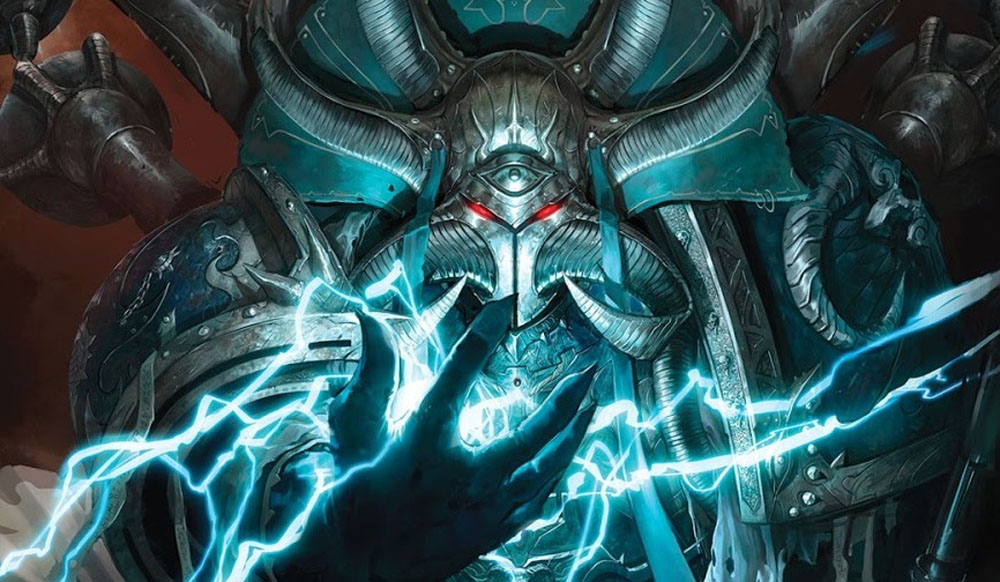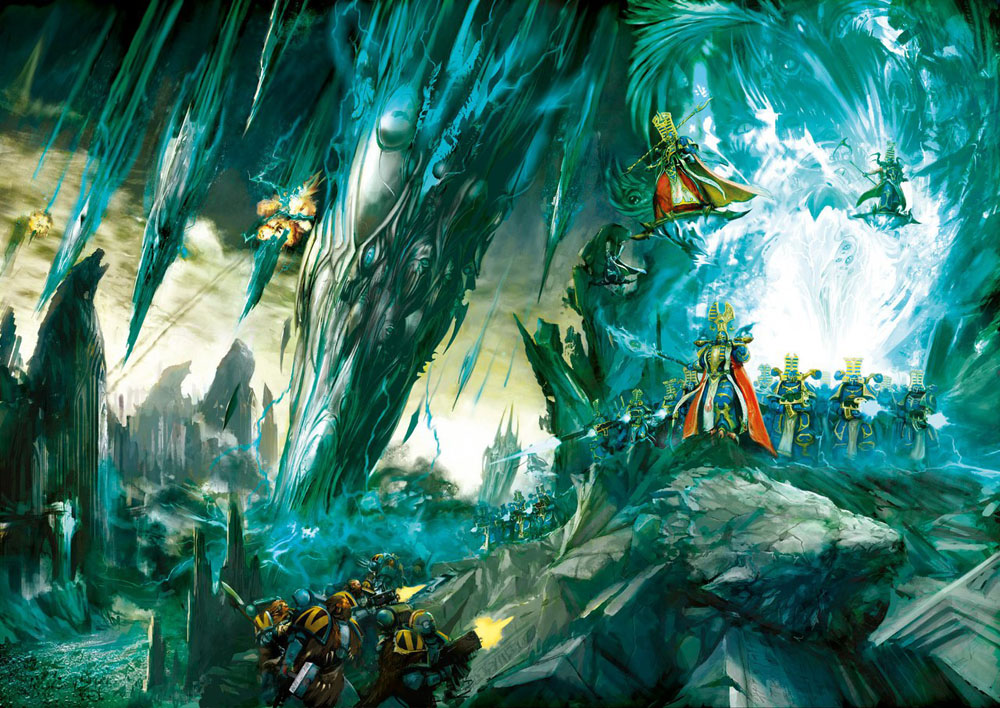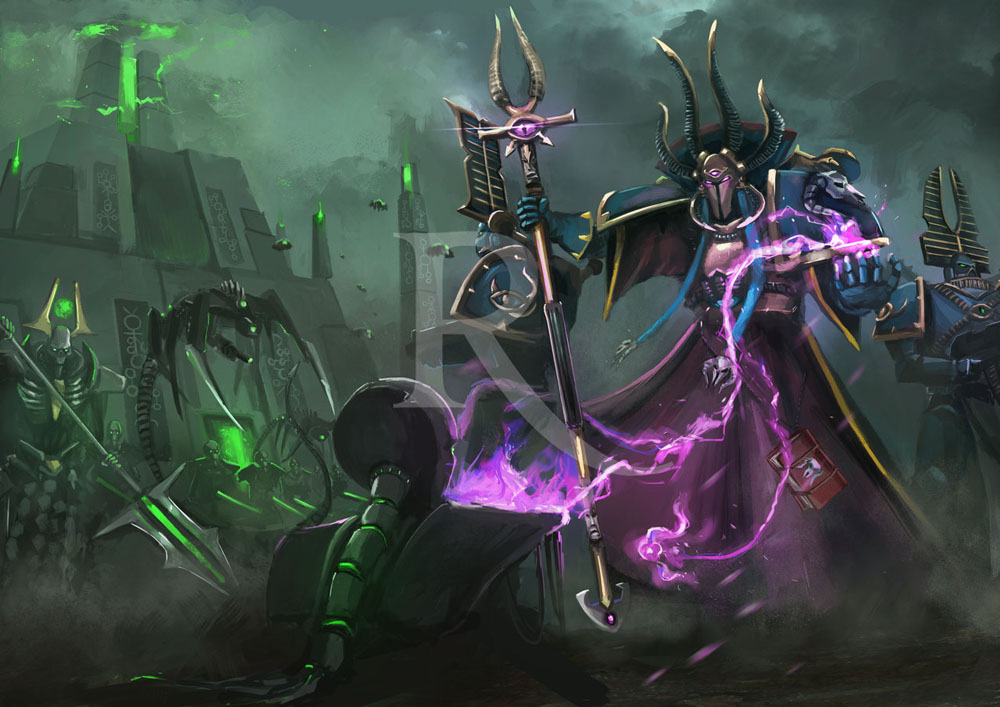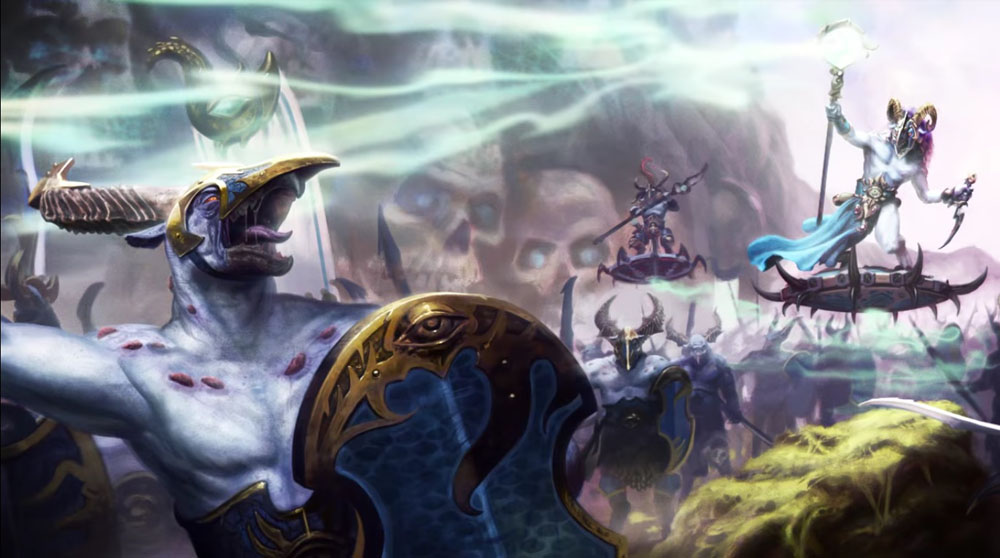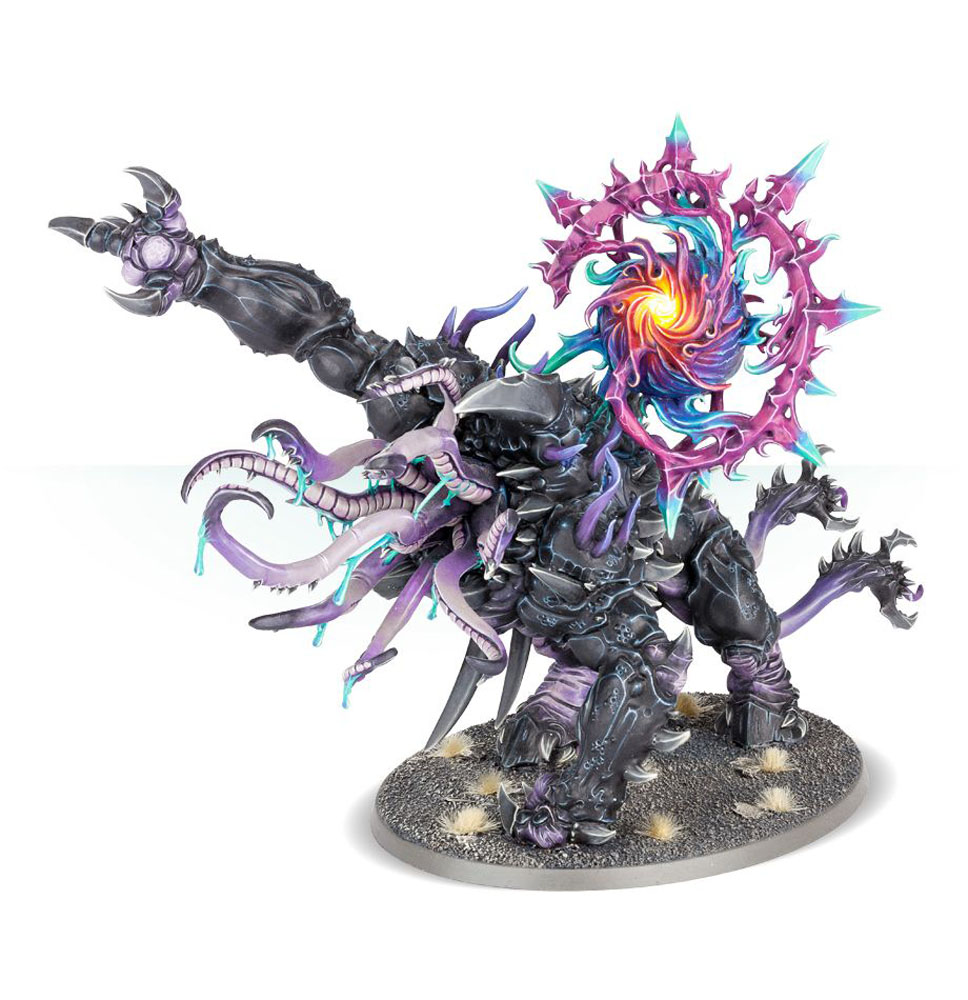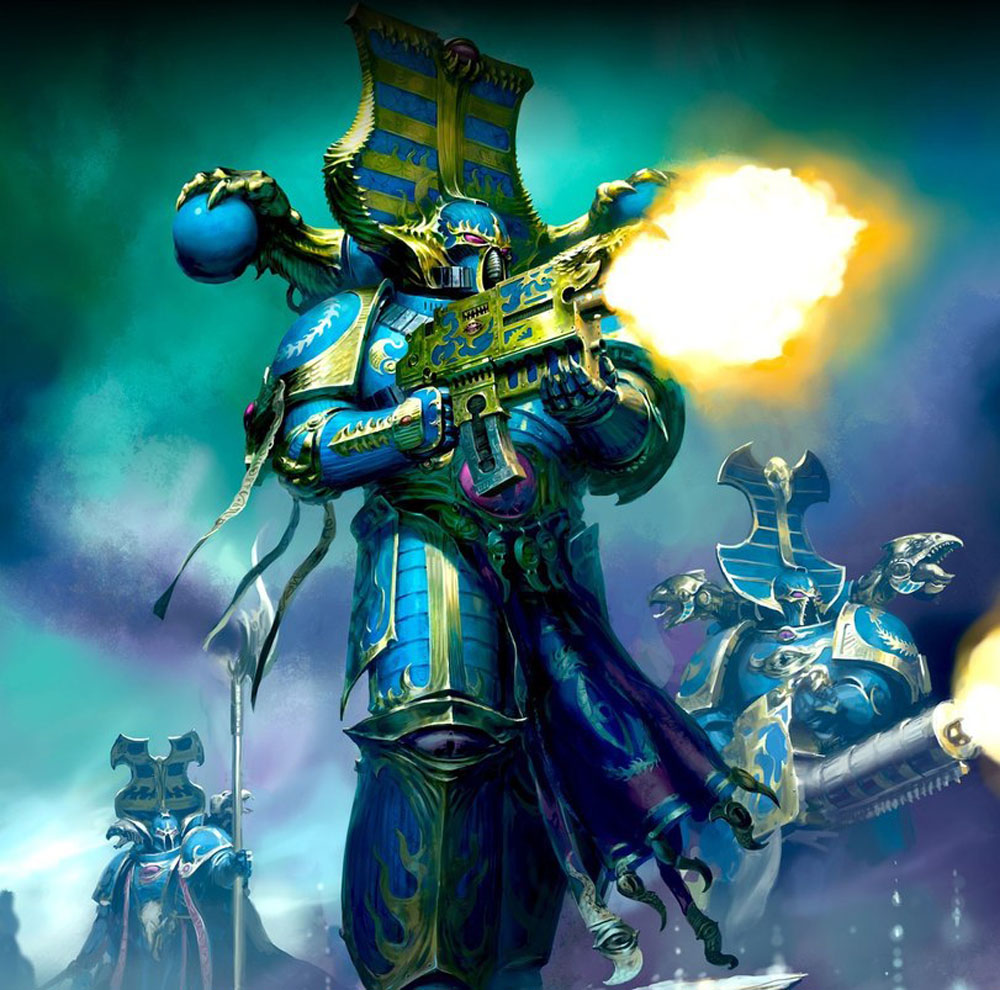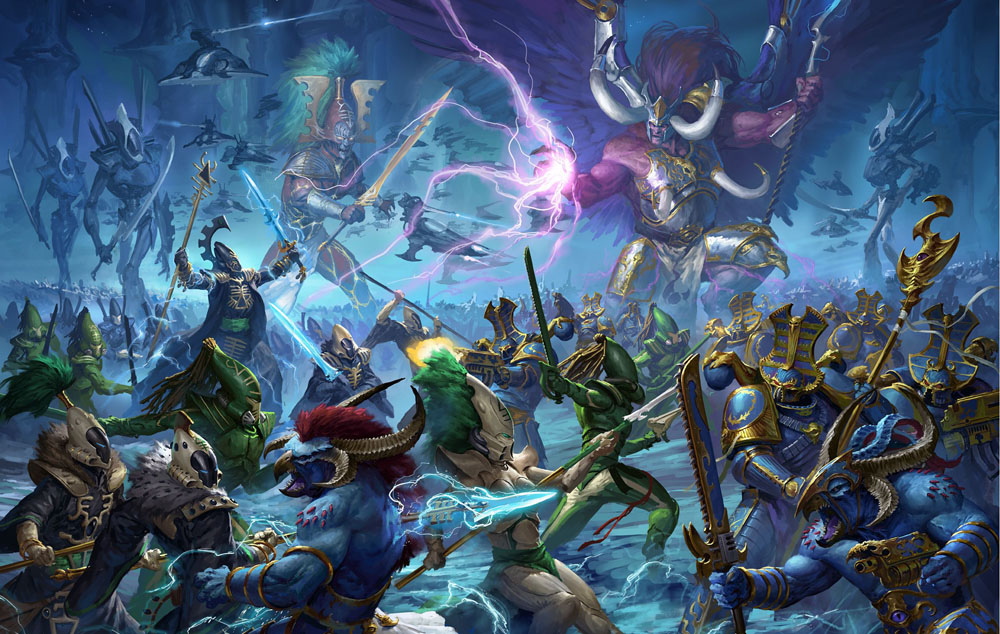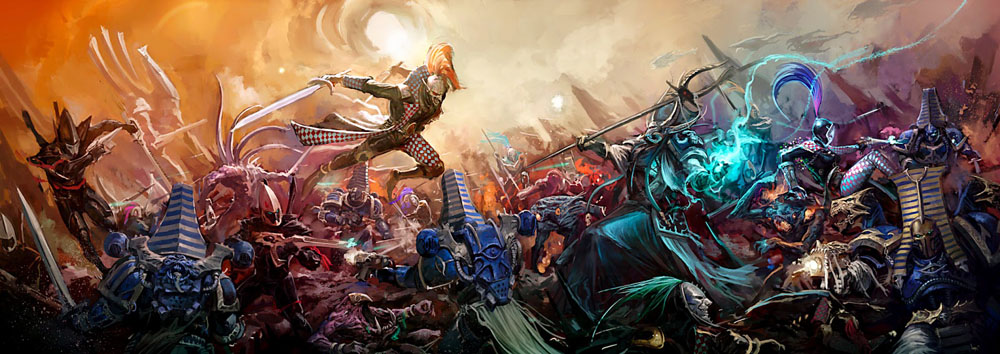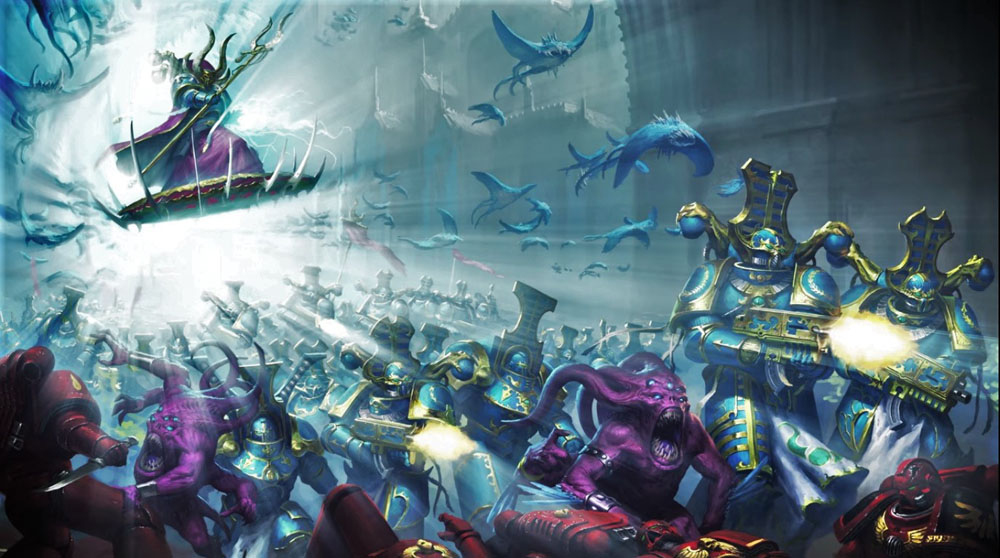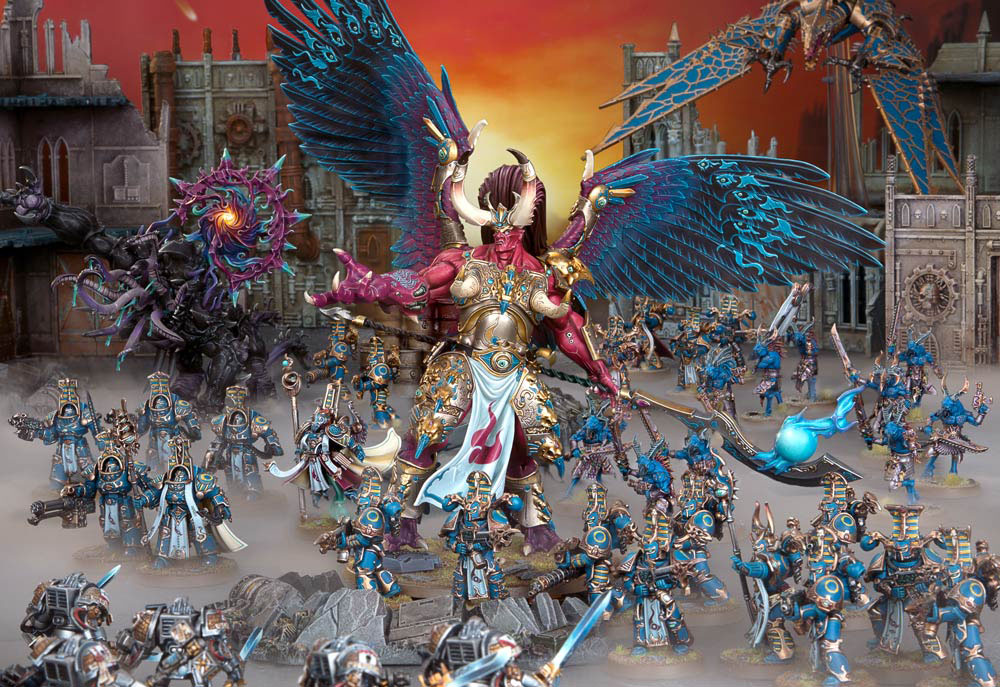The Thousand Sons codex. We’ve waited for it so long! You can see how much we love this army here, by the number of articles about them in the blog. And you can imagine our joy at the release of the first separate codex for them. Let's see how it works.
First, we should praise the design and content – there is a lot of cool art and background. You will learn absolutely everything about the legion - structure, history, tactics, successors and painting schemes for them. Just like Guard of Death, this codex perfectly represents the legion as a separate faction and gives reason to love it.
The general rule of the army - the Brotherhood of Sorcerers (this is apart from all the others typical rules for CSM) - +6 inches to the range of any spells. This is just what you need for the army of sorcerers. Considering that TS are by no means an army of close combat, and they are not very comfortable when the enemy is close, it looks just wonderful.
There were some changes in the list of units in comparison with the Index. Most importantly, Aspiring Sorcerers can now take one more spell in addition to the weakened Smite. This makes Rubrics and Scarabs more independent and versatile. The bad news is that the price of these units has not changed. TS is still a pretty expensive army and you have to think about the fate of each model.
There are also newcomers – Now you have not only usual Tzaangors, but Tzaangors flying on discs and their shaman, who came here right from AoS. Both units are incredibly good. Tzaangor Enlightened can take spears, or bows - both of them, give two attacks of Str 5 with -1 rend. Not bad at all. But they can also be greatly improved with spells and stratagems. Most importantly, they play a very special role – it is a fast unit which can distract the enemy and take objectives – there was nothing like this before in the TS army. Also, they are cheap in points, so it makes them a must-have choice
In addition to other advantages, all Tzaangors also have a Heretic Astartes keyword - which means they do not prevent you from receiving the detachment bonus and can be affected by the same stratagems as the marines. Demon keyword discovers the rest of the code's possibilities for them. And then there is an important question – are we going to get one more CSM army without CSM? Tzaangors are very good for their price. And, I'm sure many players can decide that spending points on rubrics and terminators are just not worth their effectiveness.
Another newcomer is Mutalith Vortex beast, who came straight from FB / AOS. A huge creature with a bunch of tentacles in place of a muzzle. However, it’s not nearly as good as Tzaangors. The beast shares pleasant bonuses with the nearby units, and it’s rather durable. But it can’t do any serious damage itself. So, you might find some better choices for those significant 150 pts. But still, you can have it just because of the awesome miniature.
The rest of the units changes in the units are minor: now the characters now give re-roll of 1-s to hit rather than invuln , the sorcerer on the jump pack has disappeared, the sorcerers are now allowed to take plasma pistols, and other changes like this, which can slightly affect your tactics.
Everything is simple with a list of artifacts - there are two that you will take anyway. A helmet that allows you to get a command point of 5+ each time an opponent uses a stratagem is a must. And a stone that allows you to teleport any infantry unit 9 inches to the enemy. This is also incredibly cool, but it may not be used since you can also do it with a stratagem. Whether you need this stone or not depends on how many units you want to deepstrike, and whether you have command points for this. Potential opportunity to teleport 1-3 units to the enemy changes the whole gameplay. The usual rubrics can destroy almost any screen, lining up at the most effective fire range. And if you remember about warptime, then flamers become something awesome. So, there’s no use even mentioning the other artifacts after these two. The choice is obvious.
The same situation is with warlord traits. Absolutely all are good - reduction of damage, cast re-roll, +1 to psychic tests... But the thing is that Ahriman has to take +1 invuln save, and Magnus has to take an extra spell. And if you take one of them, it's silly not to make him a warlord. If Magnus - is not always an obvious choice (he is always being focused on, he is expensive in points, and money), then there is absolutely no reason for not taking Ahriman. 3 ++ certainly makes him better. Therefore, any other characters have a poor chance to become a warlord and, accordingly, other traits won’t be used.
The stratagems. You have seen the half of them in the CSM codex (of course, veterans of the long war are here), but there are also some unique ones - basically, improving magic. Additional casts, +2 to the psychic test, if there are two more sorcerers nearby, stronger summoning, and so on. Very pleased with the opportunity to give inferno-bolts to the vehicles, which makes a usual Rhino with two combi bolters a very significant threat. A special stratagem for Tzaangors allows them to hit again, just for two points. And this is another contribution to turning this army into an army of beastemen.
Well, the most delicious thing is magic. There are three schools represented - Dark Hereticus, which moved here from the CSM codex, the Tzeentch school - moved from the demons’ index (it's strange that not from the codex), and Change, with new spells. And here it is clear that the GW were doing this book in a hurry. -1 to hit for your unit. Healing D3 wounds. Throw [the number of the god] dice and deal mortal wounds for each 6. Wait ... it seems that we’ve seen it in Death Guard codex! And the spell that adds to your invuln war in the CSM codex. So, we have 18 spells and only two are not copied from already published books. Well, they are, but from the 6th edition book. Okay, the main thing is that most spells themselves are useful. It is a vast selection of spells that makes this army interesting and multivariate. Many units can play in a new way - the same Magnus has now become completely autonomous - he can heal himself, and speed up, and protect himself with -1 to hit. There are many combinations, and you can try and try them ... The most pleasant thing is that the enemy will never know what to expect from you – mortal wounds spam, improved shooting with rerolls of everything, ultra-durable units - all this is available for your choice.
As a result, the codex leaves a positive impression. The disadvantages are obvious - the focus on Tzaangors, high prices, laziness when inventing new stratagems and magic, non-variable artifacts and traits. Perhaps, if the game designers paid a little more attention, it would be an ideal codex. However, the potential of this army is enormous. We were given a lot of tactics and options, most of which looks playable and interesting. Well, let's start the playtests.
